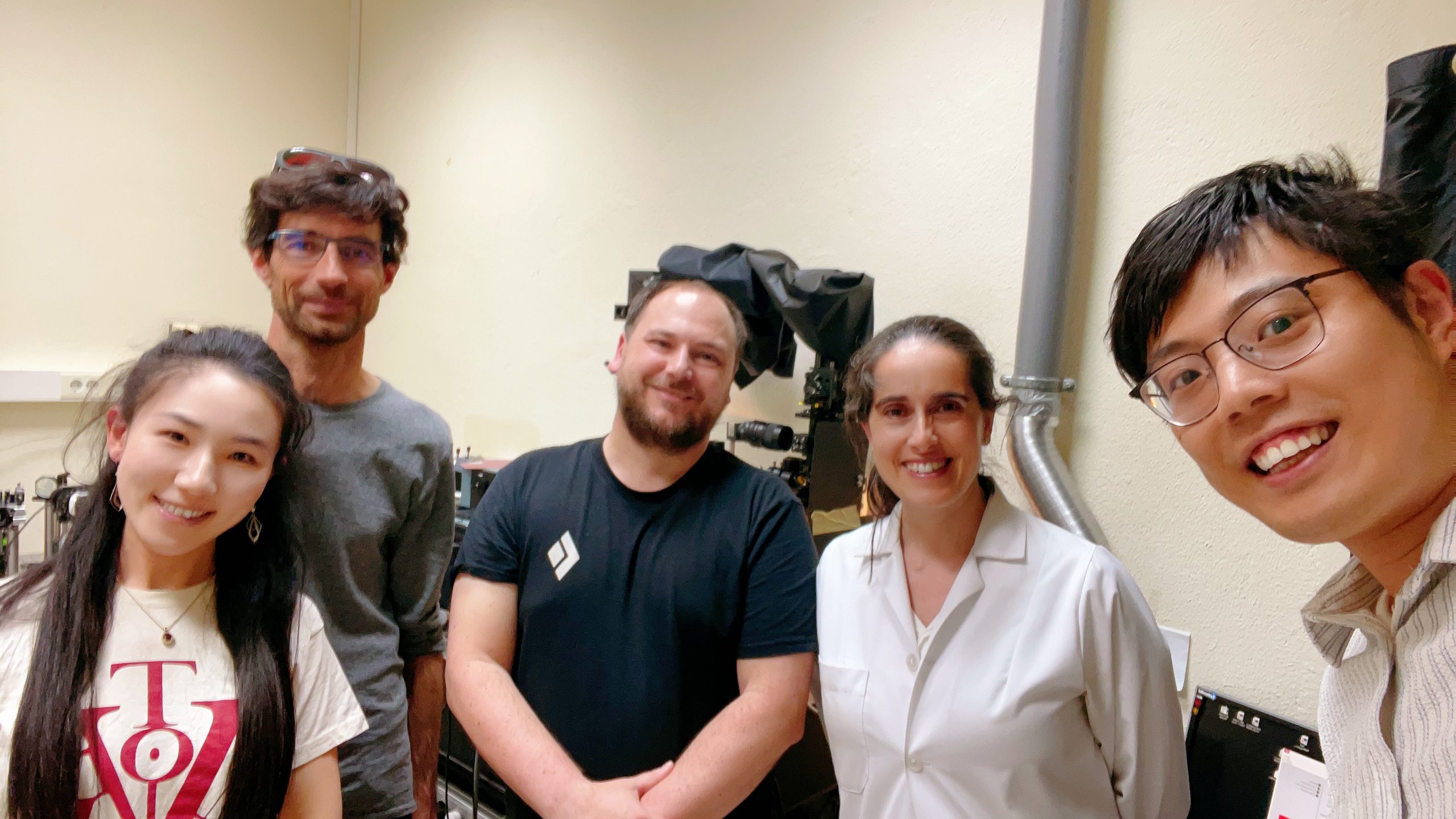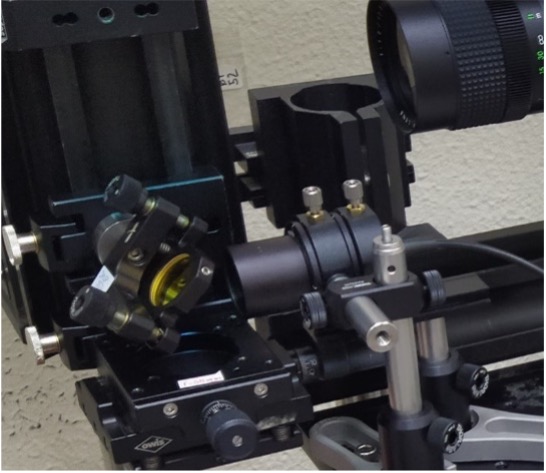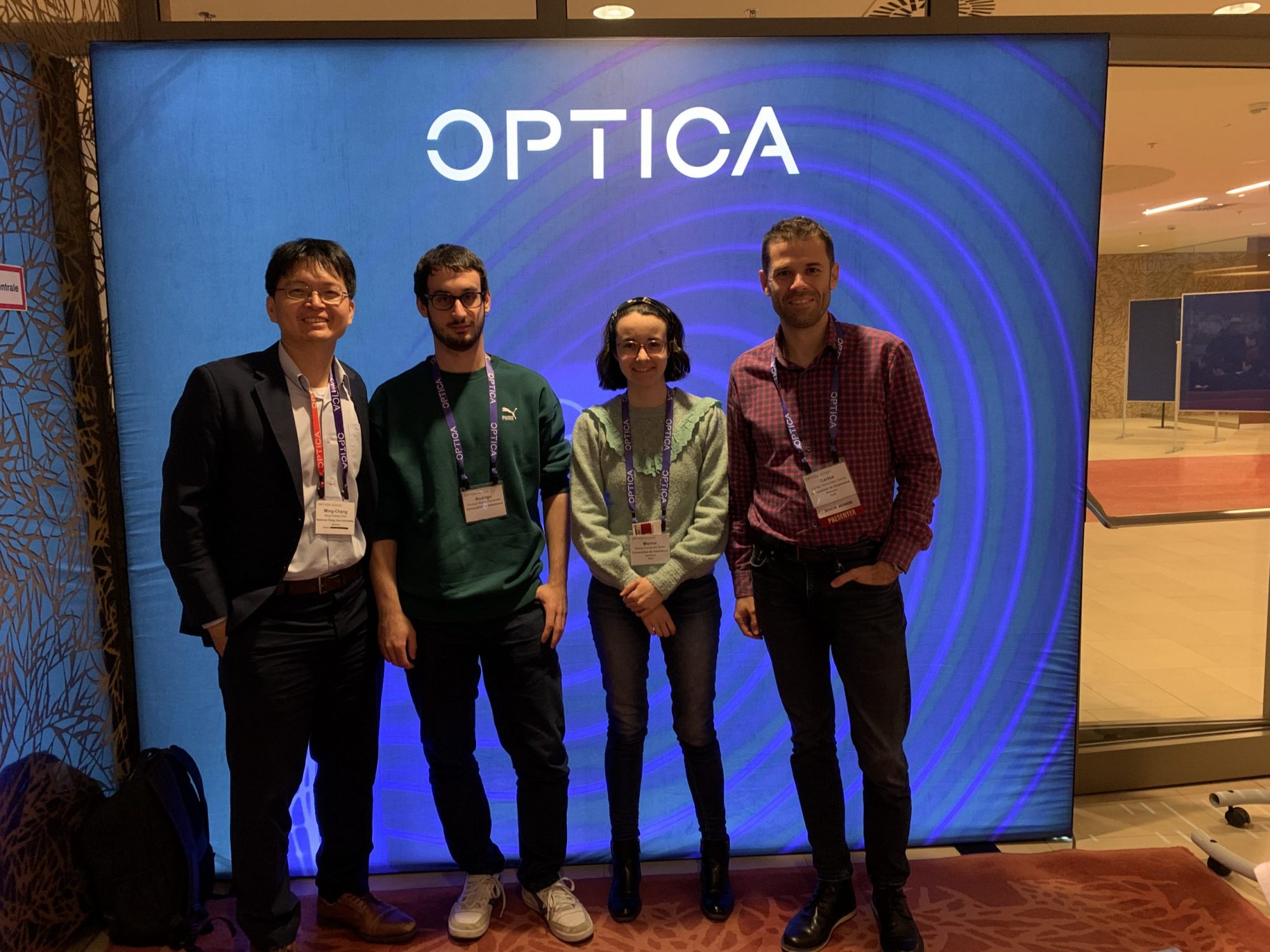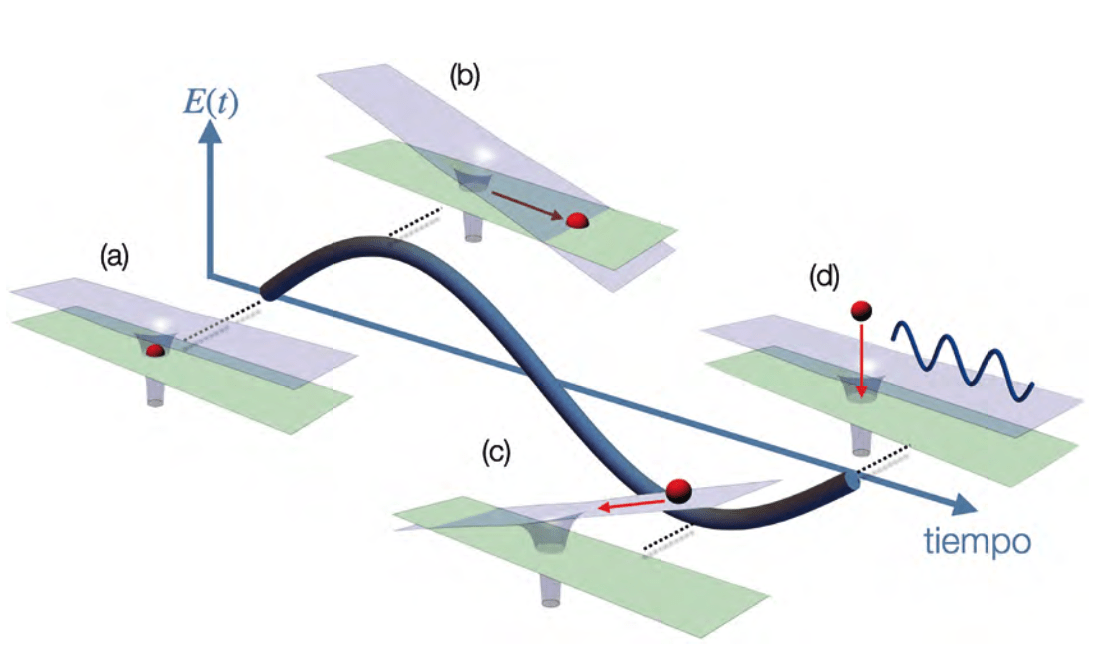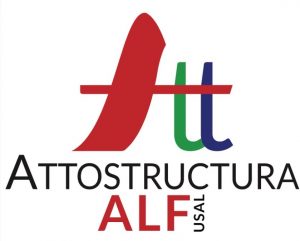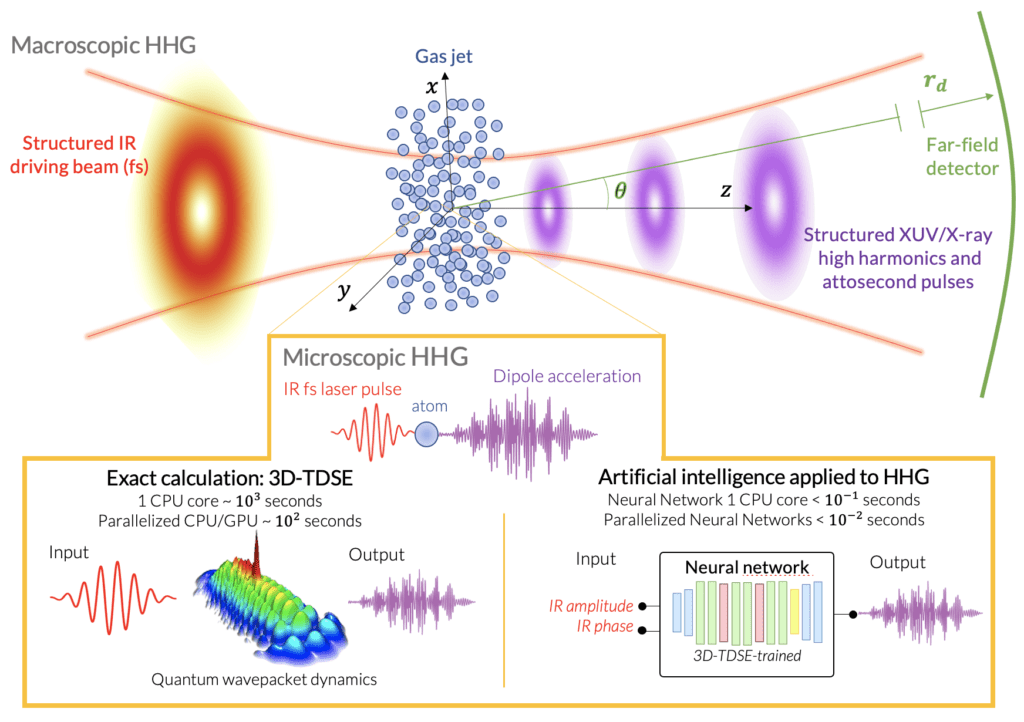In the last decades, ultrashort laser pulses have revolutionized our way of studying the microscopic world through the interaction of coherent light with matter. The generation and manipulation of these ephemeral electromagnetic fields allows us to access the fastest atomic phenomena in nature, occurring on the femto to attosecond (10-15-10-18 s) time scale. The rapid advancement of laser technology has made it possible, in recent years, to synthesize infrared pulses with sub-cycle durations, in which the most intense structure of the electric field of light barely has time to complete an oscillation at its central frequency. These pulses provide a unique tool for exploring electron motion in atoms and molecules, but their generation is still limited to extremely expensive and complex setups.
Recently, we demonstrated that these sub-cycle pulses can be obtained much more simply in standard systems based on the propagation of light through gas-filled hollow capillary fibers with a decreasing pressure gradient. This proposal is based on a surprising phenomenon of nonlinear optics, known as soliton self-compression, where an intense laser pulse can, by itself, simultaneously broaden and organize its frequency spectrum, reducing its duration almost to the limit. By following some scaling rules to design the fiber and input pulse parameters, this technique allows for the generation of high quality sub-cycle infrared pulses.
Not content with reaching durations of just one femtosecond, in our latest work, conducted in collaboration with researchers from Politecnico di Milano and Heriot-Watt University, we have explored the application of these sub-cycle fields to generate even shorter laser pulses in the attosecond regime. To do so, we have exploited the phenomenon of high-order harmonic generation, which arises from the interaction of an intense infrared pulse with the atoms of a gas. When the interaction is performed with a conventional laser, this process works as a production chain of attosecond pulses in the extreme ultraviolet, giving rise to a series of light flashes that occur at regular time intervals. However, if the interaction is driven by one of our previous sub-cycle pulses, the harmonic generation process is naturally confined to a single event, resulting in the direct emission of an isolated attosecond pulse. These solitary ultraviolet pulses are a highly sought-after tool in ultrafast science applications where very precise control and high temporal resolution are needed.
Thus, our study opens the door to a new generation of compact fiber-based systems in which, starting from a standard infrared laser pulse, we combine for the first time its extreme self-compression down to the sub-cycle regime and its direct application to generate extreme-ultraviolet isolated attosecond pulses.
More information in:
- F. Galán, J. Serrano, E. C. Jarque, R. Borrego-Varillas, M. Lucchini, M. Reduzzi, M. Nisoli, C. Brahms, J. C. Travers, C. Hernández-García, and J. San Roman, “Robust isolated attosecond pulse generation with self-compressed sub-cycle drivers from hollow capillary fibers,” ACS Photonics 11(4), 1673-1683 (2024).


